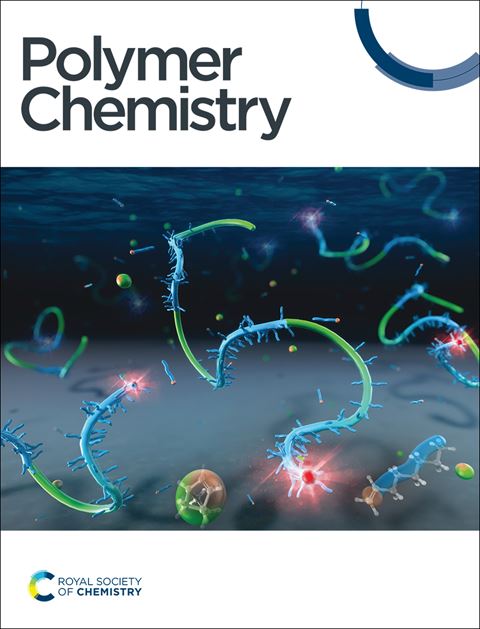Structure–property relationships of ionic poly(ethylene terephthalate) (PET): effect of ion content and species
IF 4.1
2区 化学
Q2 POLYMER SCIENCE
引用次数: 0
Abstract
The functionalization of poly(ethylene terephthalate) (PET) can potentially expand the applications of PET, particularly in high-value-added fields. To address the limitations of the low ionic content of traditional anionic PET, our study employs sodium dimethyl isophthalate-5-sulfonate (SIPM) as the ionic monomer. The copolymer was synthesized by transesterification and polycondensation. Ethylene glycol (EG) or butanediol (BDO) was applied to react with SIPM to obtain different types of ionic SIPE or SIPB. The ionic monomers are introduced into the PET macromolecular chains by reacting dimethyl terephthalate (DMT) and EG with SIPE or SIPB; for the first time, the effect of ion types and contents on PET properties was systematically studied. The incorporation of ionic groups leads to a notable enhancement in the mechanical, thermal, and hydrophilic properties of PET ionomers. The introduction of SIPB effectively improves the elongation at break and impact strength of PET, while the incorporation of SIPE substantially enhances the tensile and flexural strength of PET. Furthermore, an increase in the ion content evidently improves the hydrophilicity of the PET ionomer, with maximum water absorption of 30% and lowest water contact angle of 67°. With the introduction of the ion group, the macromolecular chain's regularity was disrupted, and the crystallinity of the PET ionomers was reduced. These changes promise an increase in transparency. Consequently, PET exhibits great potential to be applied in packaging materials, the textile industry, and the optical field.

离子型聚对苯二甲酸乙酯(PET)的结构-性能关系:离子含量和种类的影响
聚对苯二甲酸乙酯(PET)的功能化具有扩大PET应用的潜力,特别是在高附加值领域。针对传统阴离子PET离子含量低的局限性,本研究以SIPM为离子单体,通过酯交换缩聚合成了该共聚物。用乙二醇(EG)或丁二醇(BDO)与SIPM反应,得到不同离子类型的SIPE或SIPB。通过对苯二甲酸二甲酯(DMT)、EG和SIPE或SIPB的反应,将离子单体引入PET大分子链中,首次系统地研究了离子类型和含量对PET性能的影响。离子基团的掺入使PET离子单体的机械性能、热学性能和亲水性能显著增强。SIPE的引入有效地提高了PET的断裂伸长率和冲击强度,而SIPE的加入则大幅提高了PET的拉伸强度和弯曲强度。此外,离子含量的增加明显提高了PET离聚体的亲水性,最大吸水率为30%,最低水接触角为67°。随着离子基的引入,大分子链的规律性被破坏,PET离聚体的结晶度降低,有望提高其透明度。因此,PET在包装材料、纺织工业和光学领域显示出巨大的应用潜力。
本文章由计算机程序翻译,如有差异,请以英文原文为准。
求助全文
约1分钟内获得全文
求助全文
来源期刊

Polymer Chemistry
POLYMER SCIENCE-
CiteScore
8.60
自引率
8.70%
发文量
535
审稿时长
1.7 months
期刊介绍:
Polymer Chemistry welcomes submissions in all areas of polymer science that have a strong focus on macromolecular chemistry. Manuscripts may cover a broad range of fields, yet no direct application focus is required.
 求助内容:
求助内容: 应助结果提醒方式:
应助结果提醒方式:


